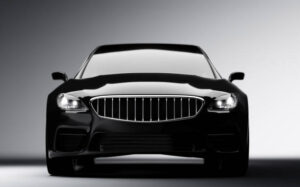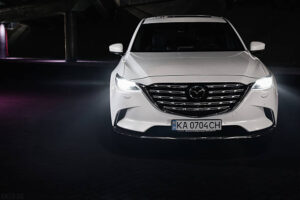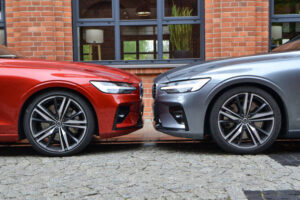The Influence of Reflector Design on H4 Bulbs Performance: Compatibility and Traps of Classic Car Upgrading
Even if it happens that you have stood under a street lamp and had your headlights staring furiously at you, after having just replaced the bulb/s because they are bizarrely shaped and the beam pattern has become not quite upright, then you are not alone. Car owners, particularly when they have been making use of old vehicles, always reach a dead-end when an ordinary upgrade seems like one under the rocket science. The reason is one of the big reasons? Reflector design is also huge part of the actual performance your h4 headlight bulb would have. And now, grabbing our sleeves, we jump in the nuts and bolts of this enlightening subject.

So, What This H4 Bulb, and Reflector Design Bull Is All About?
H4 bulbs have traced their roots in the automotive lighting industry since the 70s. Their dual-filament nature gives out both a high beam and a low beam and that is why they are commonly referred to as favorite automakers and enthusiasts. However, there is one thing most people fail to realize, namely that even the H4 bulb was developed to work well with a specific type of reflector, i.e., the simple, parabolic reflector all of the older cars used.
Imagine it to be as baking a cake with the wrong pan. Of course, ingredients are correct, but the result can turn into a flop / or burn. Switch your bulb tech (halogen to LED or HID), and forget about the reflector? You face the dangers of headlight scatter, bizarre beam patterns and even blinding other drivers. Not good.
The Anatomy of Reflector: Beyond Shiny Metal
Not a bowl of chrome behind a bulb, actually, a reflector. It is also designed in such a way that it has particular angles and curves to place the lights where they are required. The position of the filament and its size are very accurate in the original H4 halogen bulb. Dozens of light reflect off its surface, shoots forward and… voilà a regulated stream that allows you to see the road, but not to make a mess of things.
When individuals put the bulbs with filament (or leds in other locations, that well-laid-out light performance goes BOOM. The light is shooting everywhere except the highway and then your designated demarcation line has been lost and now when you drive in the night, it is packed like darting in spotlights.
Compatibility Conundrum: The new and the old
The truth of the matter is that. It is tempting to cram in a newer, whiter, or longer lived bulb. The halogens dim and the LED bring the promise of the sun in your headlights. The thing is that, old reflectors do not fail to get along with modern light sources or bulb shapes.
Majority of H4 LED retrofits are really not a match when it comes to the location of the filament compared to the original halogen. The geometry is jammed. The reflector reflects the light in a strange manner. The Mini, Land Cruiser or Toyota Hilux of yours suddenly lights the trees and signposts, not the tarred road.
HIDs are more complicated. The HID bulb has the small arc tube, which cannot be compared to the H4 filament whatsoever. Plugging an HID into a non-projector H4 housing almost always means blinding on-coming vehicles and sitting down on a hefty traffic ticket with Officer Grumpy.

Fact Check: Road Ten-step and Legal Blues
Did you ever know that there are very exacting requirements in the matter of headlamp beam pattern and intensity in many countries? The reflector pattern of light has already been tested and certified to a certain type of bulb. Use something different (no matter how it fits physically), and you may break some rules. It is a matter of road safety pure and simple.
In such countries as the UK, Germany, and Australia, inspection of LED retrofits in reflector housings is failing. In the locations where there are less rules, it is not simply uncourteous to blind others- it is unsafe. There is a reason behind regulations.
The Heritage of the Parabolic Reflectors
Majority of vehicles constructed prior to 2000s are fitted with parabolic reflectors. These offer a straightforward, broad, and level a beam pattern with non-replaceable H4 bulb. The fade out is not that sharp, yet it works. These reflectors were designed by the engineers taking into consideration the output and the color temperature of halogen.
What this implies is that slapping illegal bulbs will not only reduce your visibility but jeopardise the night travels of all other people. Performing an upgrade without conducting research work is similar to playing Jenga when blindfolded.
Silver Lining: To Get Better Results
Does this imply that older cars will never have brighter lights? Thankfully, no. However, you must know how to play the game.
Look out for bulbs that resemble the filaments of a halogen: You can find LED H4 bulbs with the positioning and size of the filaments close to an original halogen. They are not better by far, yet outcomes are improved.
Here is another example: Full Headlight Assemblies: Replacing the complete headlight with a newer one with an LED or HID Projector (assuming it is legal in your country) can truly bring what we call modern lighting. It costs more, but you won’t be seen in the clouds.
Go With Quality Brands: A special name-less AliExpress product can be very attractive, but its splush may be unreliable. Reliable brands put their products through testing and measurements to ensure that they enhance compatibility with reflectors.

Adjust and Test after installation: When upgrading you always need to adjust your headlights. Direct them on a garage door or wall and adjust until they provide a beam pattern as good as possible.
Be Prepared to Resist: There is always the possibility of state/country visitations, in which case you may have to switch back to halogens. This is the reason why you should have your old bulbs at hand.
The Greatness of Caution and Research
I once observed a friend install new extra bright H4 LED in his 1992 Civic car. On the first night he drove around proudly, until he spotted flashing lights in the rear. As it turns out, he was even blamed on improper lighting and returned to using halogens. Not fun. Therefore, when you do think of jumping, you should do some research and poll the forums or club owners. You might not be the first to have moved up the ladder.